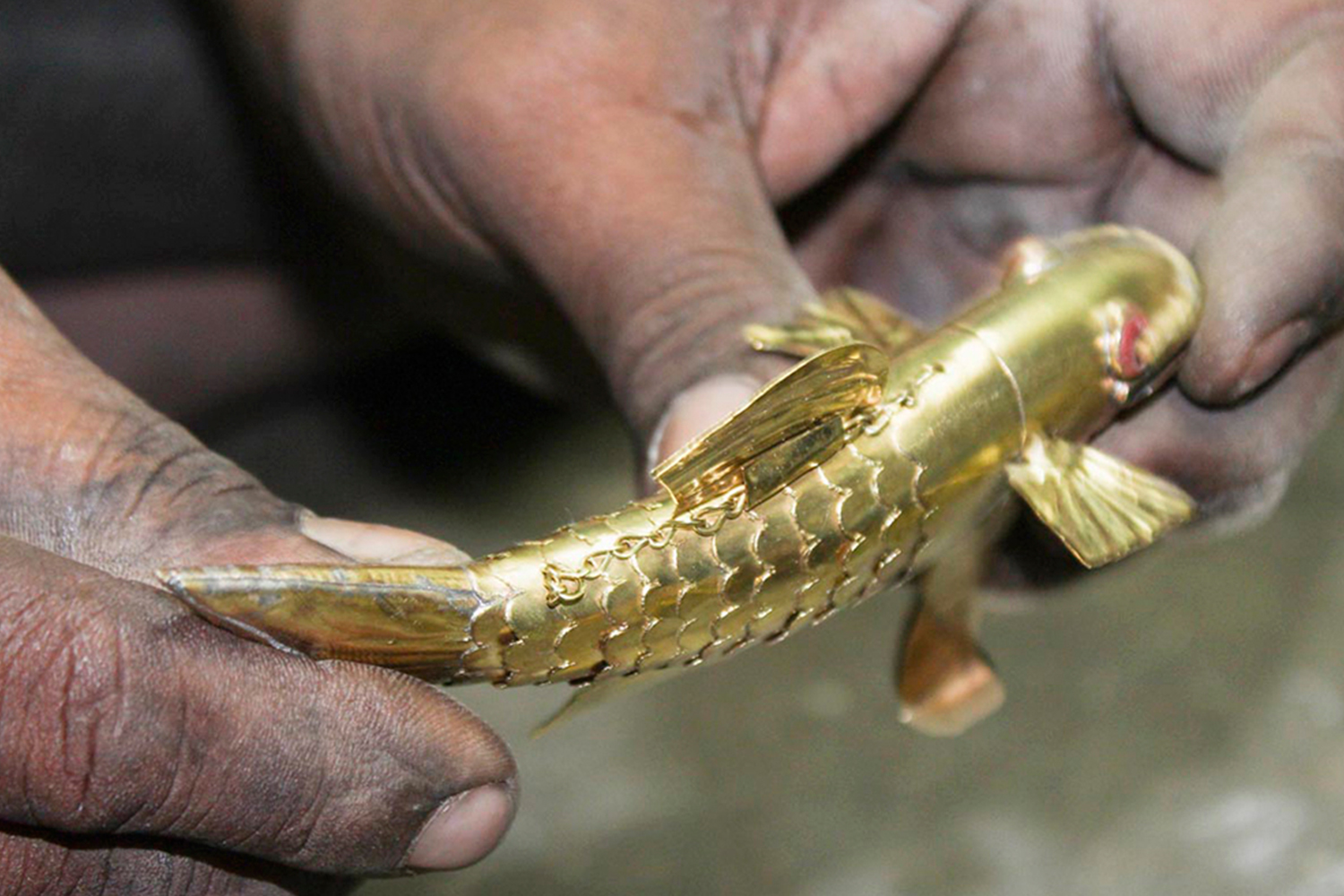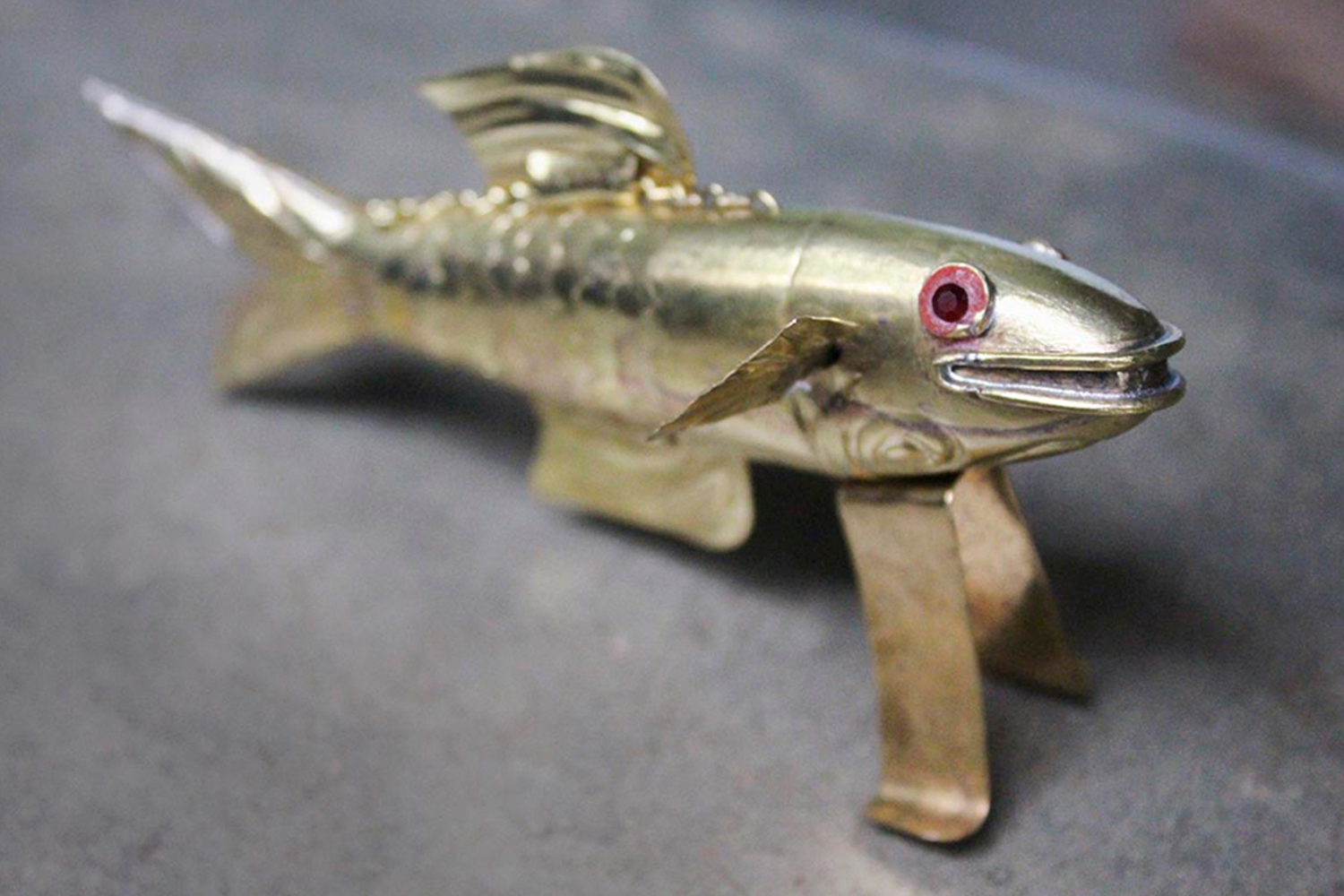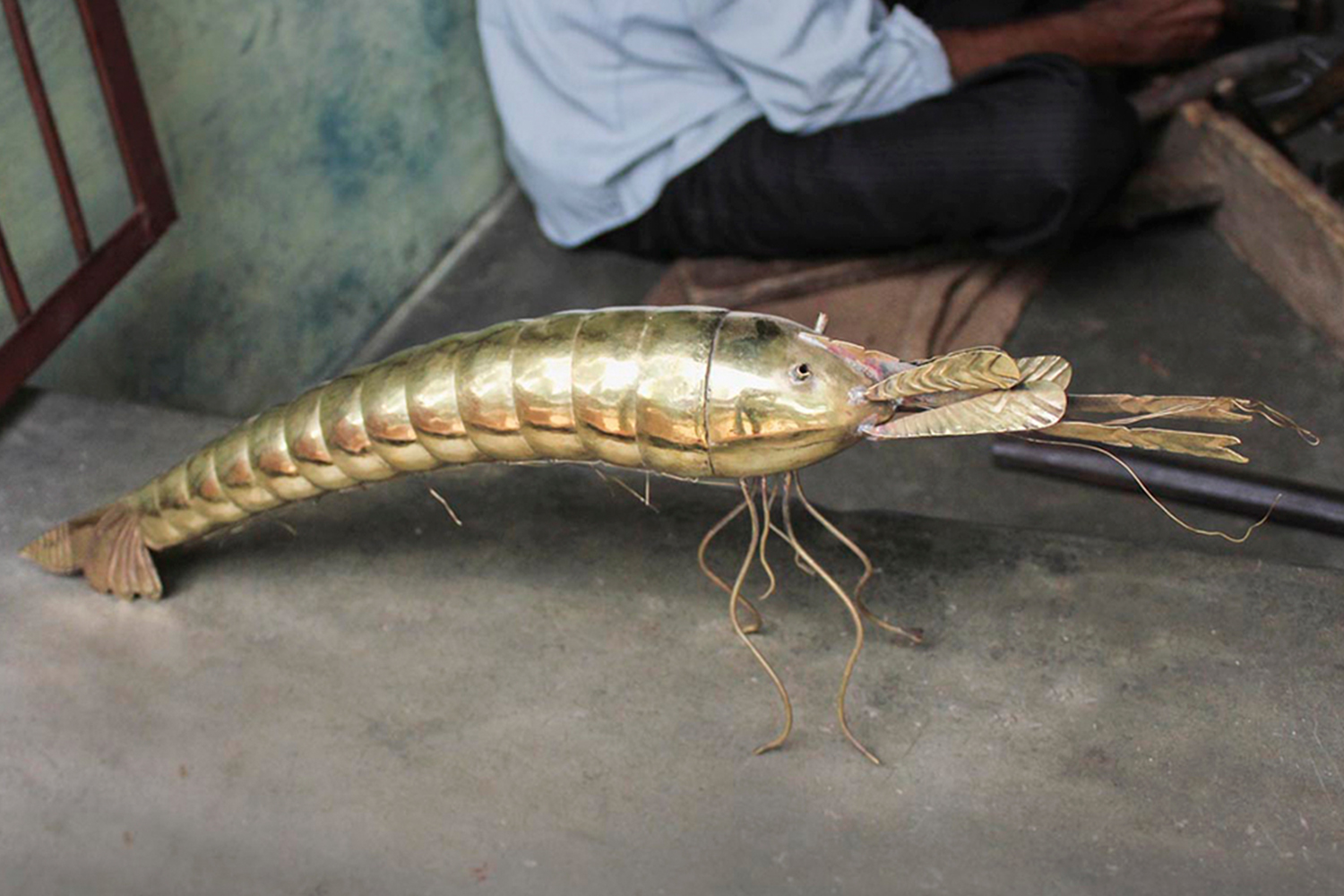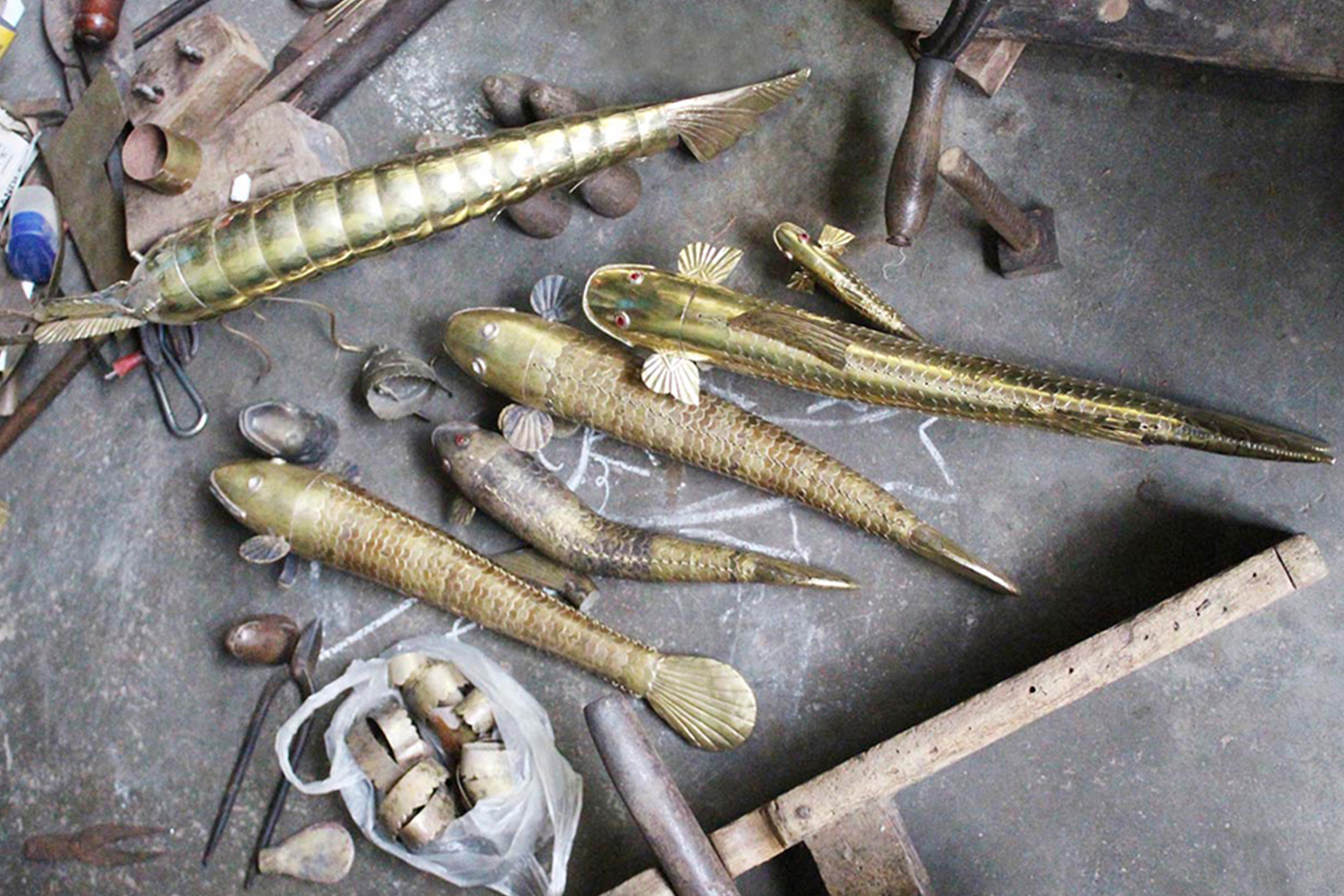ARTICLE
Ganjam Fish
Originally created as toys by repurposing old utensils, the brass fish made in Belaguntha in the Ganjam district of Odisha, India, are distinctive for their lifelike flexibility. Locally called pitala macha meaning “brass fish”, they are commonly known as Ganjam fish. The craft is traditionally practised by Odisha’s Kansari community of brass and bell metal workers, though few artisans today make these objects. Regarded as a symbol of peace, the brass fish are also associated with the Matsya, or fish, avatar of Vishnu. The artefacts are considered auspicious by the community, and traditionally included among other significant objects in a bride’s trousseau, as symbols of good luck. While there is little information about the origins and early development of the craft, it is understood to have originated around the ninth century and grown in popularity during the seventeenth century.
Made using brass sheets and brass wire, the fish comprises three main components — the head, the torso and the tail, which are made in that order and then assembled. A brass sheet of the desired size is shaped into a conical form to create the head, with small protrusions and openings introduced for the eyes and mouth. The size of the head determines that of the torso, which is made of a large number of circular segments of diminishing size, threaded together with wire in a way that allows for fluid movement. Each segment is a ring shaped from a flat strip of brass, with one scalloped edge that gives the impression of fish scales; every centimetre of the fish body requires between one and three such segments. A rounded or forked tail, made of two identical flat pieces of brass, is attached to the last torso section. Finally, fins and whiskers are attached, as well as details such as eyes, which are typically represented using small bright stones that offer a striking colour contrast to the rest of the fish. The flexibility of the object, deriving from its precisely constructed and meticulously linked elements, is known to increase as it is used over time.
This craft is specific to Belaguntha, where Kansari artisans have practised it for generations, patronised by various branches of the Bhanja dynasty, followed by the British colonial administration. Originally employed as imperial metalworkers, the artisans are said to have developed the flexible fish forms while building weapons and armours for the Bhanjas. Bhikari Maharana, Gangadhar Maharana and the latter’s wife Guni Maharana are acknowledged as early practitioners of the craft, and they passed down the skill through their family. Their descendants Maheswar Maharana and Pradeep Maharana, along with Sushanta Sahoo, are among the mere three or four remaining families currently practising the brass fish craft. They also make snakes and prawns with the same technique, as well as other creatures such as turtles. Flexible brass snakes have a small market among devotees as offerings in Shiva temples, but are even more laborious to make than the fish as they require more segments. Wood has also been used to make these objects in the past but is rarely used now.
Maheswar Maharana, awarded the Odisha State Handicraft Award in 1984, is known for his creation of a flexible fish from wood, representing the Matsya avatar of Vishnu. In 2000, Pradeep Maharana received the State Merit award in recognition of his expertise in the flexible brass craft, and other artisans have also received governmental recognition over the years. However, low returns and the lack of steady governmental support have led most Kansari artisans to abandon the painstaking and laborious craft form. While the unique and striking products have received some attention, their market exposure has been too limited to ensure the craft’s sustainability. Most Kansari craftspersons thus support themselves with alternative professions or make idols for temples.
In 2022, Odisha’s state handicraft department applied for a Geographical Indication tag for Belaguntha’s flexible brass products in order to protect their identity and authenticity. The application is currently under review.
Bibliography
Bibhudutta, Baral, and Bhargava A. J. “Flexible Brass Fish Craft – Ganjam, Orissa.” D’source. Accessed April 21, 2023. https://www.dsource.in/resource/flexible-brass-fish-craft-ganjam-orissa/introduction.
Patnaik, Sunil. “Brass Fish Art on Verge of Extinction.” The Telegraph Online, January 19, 2007. Accessed April 21, 2023. https://www.telegraphindia.com/odisha/brass-fish-art-on-verge-of-extinction/cid/1389220.
Ranjan, Aditi, and M. P. Ranjan. Handmade in India: Crafts of India. New Delhi: Mapin, 2007.
Sahu, Diana. “Fish Tales Etched in Brass.” Odisha Dekho, November 19, 2015. Accessed April 21, 2023. https://dianasahu.wordpress.com/2015/11/29/fish-tales-etched-in-brass/











